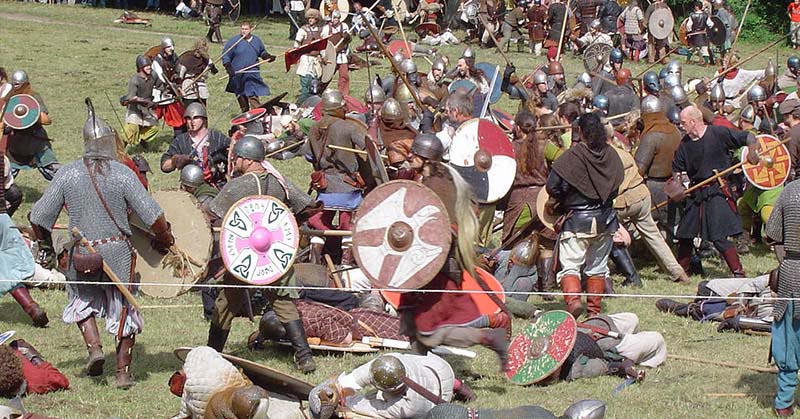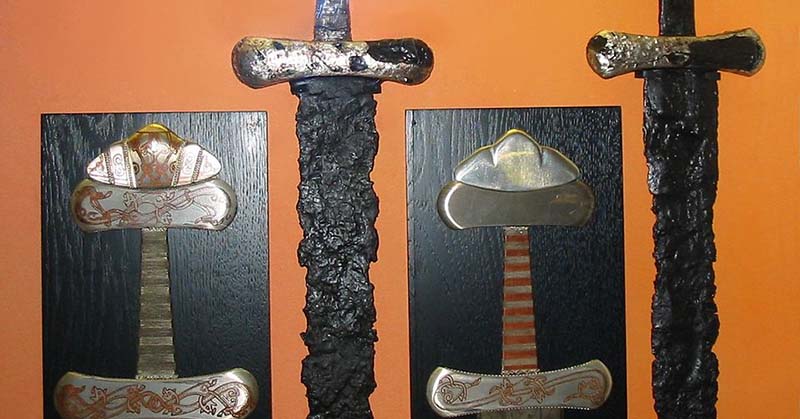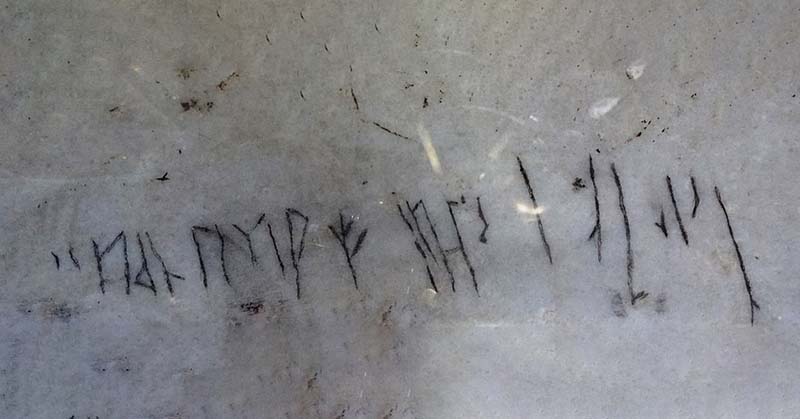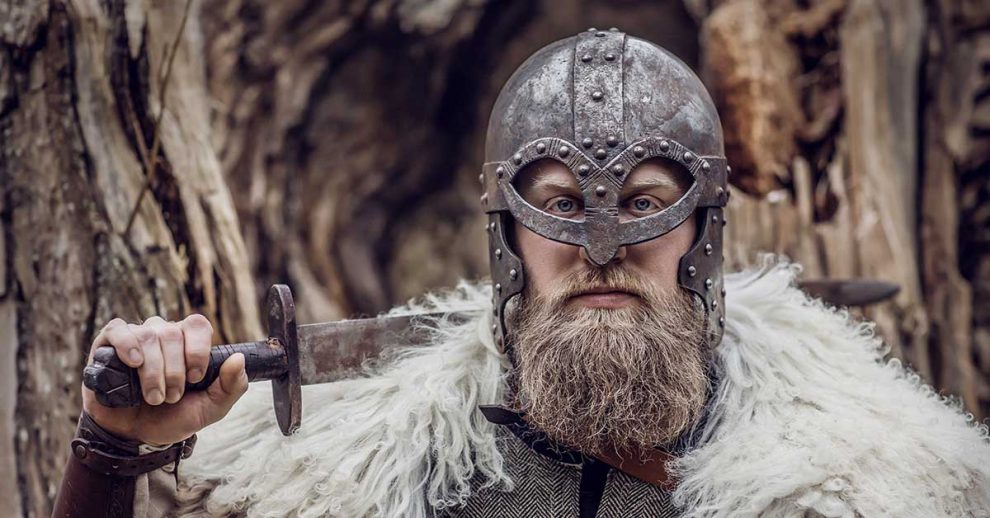The Vikings were a seafaring people from the Scandinavian regions of modern-day Norway, Sweden, and Denmark, active primarily between the late 8th and early 11th centuries. Known for their swift longships and fearless exploration, they weren’t just raiders but also traders, settlers, and explorers who left a lasting imprint on the lands they touched. The term “Viking” originally referred to the act of going on a seaborne expedition or raid, and over time it came to define the Norse warriors themselves. Far from being a unified group, they hailed from diverse tribes and kingdoms with varying goals—some sought wealth, others land, and some simply adventure.
As Viking influence spread, they established settlements from the British Isles to Iceland, Greenland, and even parts of North America, while forging trade routes as far as the Islamic Caliphates and Byzantium. Over time, their dominance waned due to internal consolidation in Europe, conversion to Christianity, and the strengthening of local defenses across their former targets. Yet their legacy lives on—not only in history books but in language, law, and legend.
Here are 25 lesser-known and fascinating facts that reveal just how complex, brutal, and surprisingly sophisticated the Viking world truly was.

1. Viking military tactics thrived because they disregarded conventional battlefield methods and customs of the time. They ignored unspoken rules, such as refraining from attacking holy sites. Instead, Vikings deliberately targeted religious sites for their vulnerability and wealth, which proved highly effective in their raids.
2. The Icelandic language has remained so isolated that modern speakers can still read and understand texts written in Old Norse. This ancient language was spoken by the original Viking settlers from Scandinavia who colonized the island over 1,000 years ago. As a result, Icelanders today have a unique linguistic connection to their Viking ancestors.
3. Vikings used strong onion soup to assess the severity of stomach wounds in their injured soldiers. After a few minutes, they would smell the wound; and if they detected the scent of onion soup, they knew the wound was too deep for recovery. This method, though primitive, was a practical approach to battlefield diagnosis.
4. The Vikings engaged in a form of rap battling known as “flyting,” which involved a ritualistic, poetic exchange of insults. Practiced mainly between the 5th and 16th centuries, flyting was a popular form of entertainment. This verbal sparring demonstrated the Vikings’ wit and linguistic skills.
5. Vikings enslaved so many Irish women that by the time they colonized Iceland, the settlers’ genetic makeup was approximately 50% Irish.
6. Vikings were considered neat-freaks who Anglo-Saxon believed attracted their women through practices like bathing once a week and combing their hair daily. These habits were seen as barbarically unfair by their contemporaries.
7. In 1066, an unnamed Viking warrior heroically defended a narrow bridge, only four people wide, against Saxon attackers. He withstood constant assaults for an hour until a clever Saxon floated down the river in a barrel and struck him in the groin with an arrow from beneath the bridge. This tactic ultimately ended the Viking’s valiant stand.
8. Among Vikings, cats were common wedding gifts due to their association with the goddess of luck, Freyja. Men preferred women who loved cats, believing it increased the likelihood of a happy marriage. Additionally, Vikings also sailed with cats to control rodent populations on ships. This probably contributed to the global spread of cats.
9. Viking girls married as young as 12 and managed households while their husbands embarked on adventures. Despite these responsibilities, they enjoyed more freedom than other women of their era. Viking women could inherit property, request a divorce, and reclaim their dowries if their marriages ended.
10. During a Viking raid on Paris in 886, King Charles III, known as “The Fat,” chose not to fight them. Instead, he paid the Vikings 700 livres (257 kg) of silver to redirect their raid to Burgundy, which was rebelling at the time. This strategic decision avoided conflict in Paris while addressing another political issue.

11. Early Viking smiths used the bones of their deceased ancestors and slain animals to strengthen their swords, believing they could transfer the spirits into the blades. This process indeed enhanced the swords because the carbon in the bones combined with iron to create a primitive form of steel. Consequently, these swords gained both symbolic and practical value in Viking culture.
12. Archaeological evidence indicates that Vikings reached Baghdad, the center of the Islamic Empire, during their expeditions. By reaching Baghdad, the Vikings not only expanded their trade routes but also engaged in cultural exchanges with the Islamic world.
13. During the later Viking period, craftsmen made Ulfberht swords from crucible steel, sourced all the way from India. The exceptional quality of this steel made these swords highly valuable, leading forgers to counterfeit the Ulfberht name on lower-quality swords, akin to fake designer logos today.
14. Some Viking runes served as personal graffiti, with translations such as “Ingigerth is the most beautiful of all women” or “Tholfir Kolbeinsson carved these runes high up.”
15. Scientists have used advanced dating methods to show that a Viking ax cut trees on the North American continent exactly 1,000 years ago, in 1021 C.E. This method relies on a spike in solar radiation that left a distinct mark in tree rings worldwide. This discovery proves that Vikings arrived in North America long before Christopher Columbus.
16. When Norse Vikings sailed to America in the 11th century, they expected to encounter a race of monsters to battle. Instead, they found indigenous peoples, whom they called Skræling, or pygmies, due to their disappointment at finding no real monsters.
17. Harald Hardrada, a Viking who fled from Norway to Russia, became an elite guardsman in the Eastern Roman Empire and fought in Iraq. He later returned to Russia to marry a princess and eventually arrived back in Norway as a king, before invading England with his army.
18. In Viking culture, communities gathered to create laws and settle disputes in an assembly known as the “Thing.” This democratic practice allowed for open discussion and decision-making, with emphasis on communal governance.
19. Valhalla is just one of the halls where dead Viking warriors go after death, with half chosen by Odin for Valhalla and the other half selected by Freyja for Folkvangr.
20. Vikings used ravens to navigate their ships, bringing them aboard and releasing them to find land by following the direction in which the birds flew. The raven held such significance for the Vikings that it became a symbol on their flag.

21. During the 9th century AD, some Vikings reached Constantinople and carved their names in runic inscriptions inside the Hagia Sophia. These engravings remain visible to this day, offering a tangible connection to the past.
22. When Viking leader Rollo Flanders was asked to kiss King Charles’s foot, he refused. Instead, he ordered one of his warriors to perform the task. The warrior complied by lifting the king’s foot to head height, inadvertently pulling the king from his chair, and then kissed the foot.
23. The Vikings served as the personal bodyguards of the Byzantine Emperor, known as the Varangians or “Men of Oath.” This elite group was highly respected for their loyalty and combat skills.
24. Brunette Vikings, particularly men, used strong soap with high lye content to bleach their hair. In some regions, they extended this practice to their beards as well. This hair-lightening trend was not only a fashion statement but also reflected the Vikings’ attention to personal grooming.
25. Erik the Red, a Viking exiled from Iceland, discovered Greenland. Feeling isolated in the barren icy wilderness and largely uninhabitable landscape, he marketed it as “Greenland” to make it sound appealing to attract settlers.
Sources: 1, 2, 3, 4, 5, 6, 7, 8, 9, 10, 11, 12, 13, 14, 15, 16, 17, 18, 19, 20, 21, 22, 23, 24, 25





Add Comment